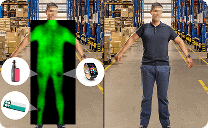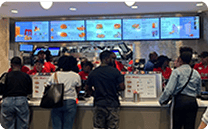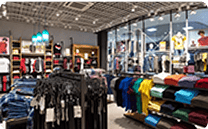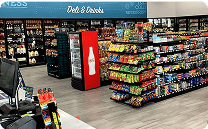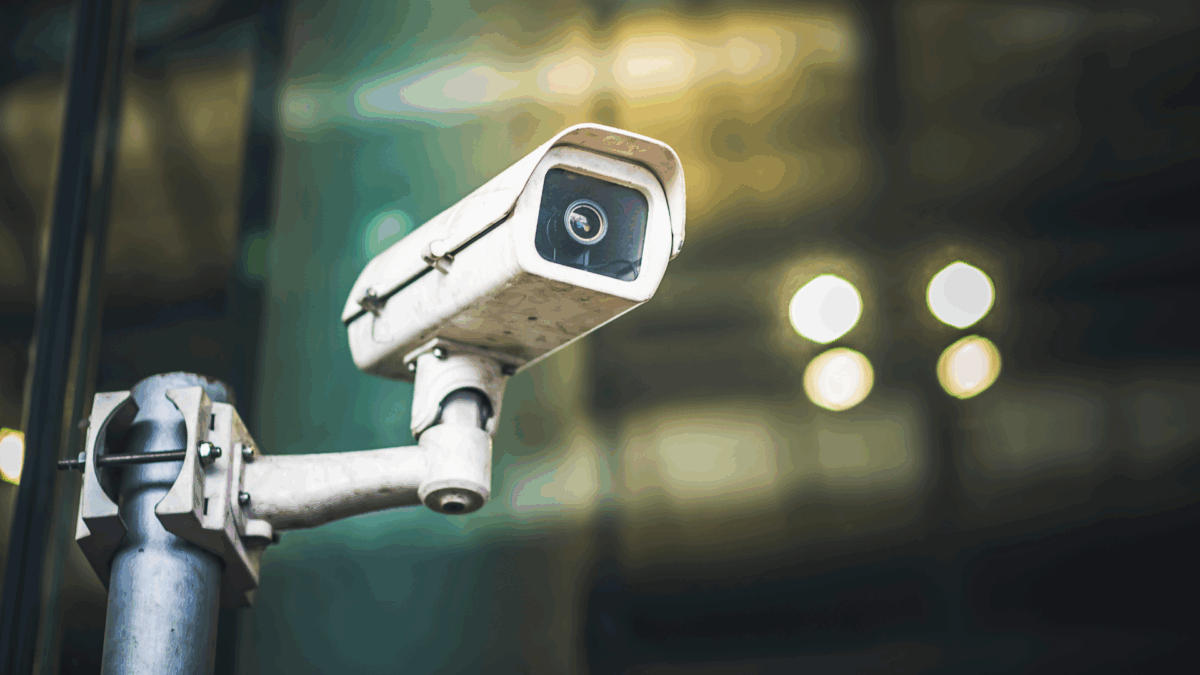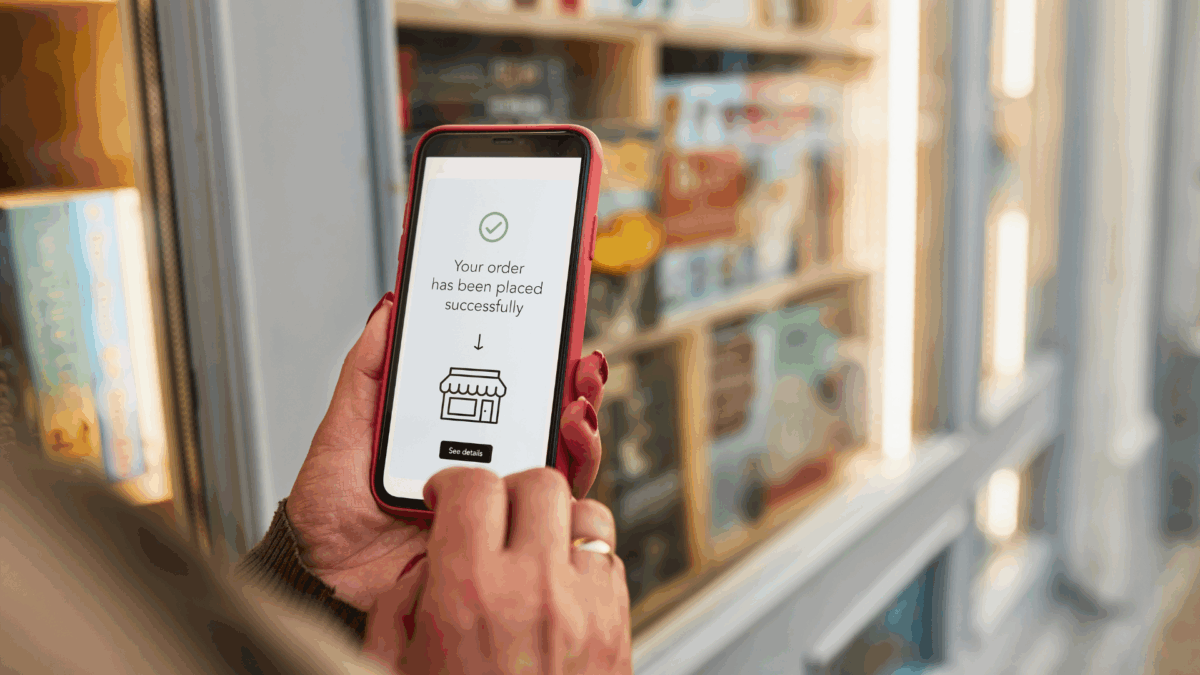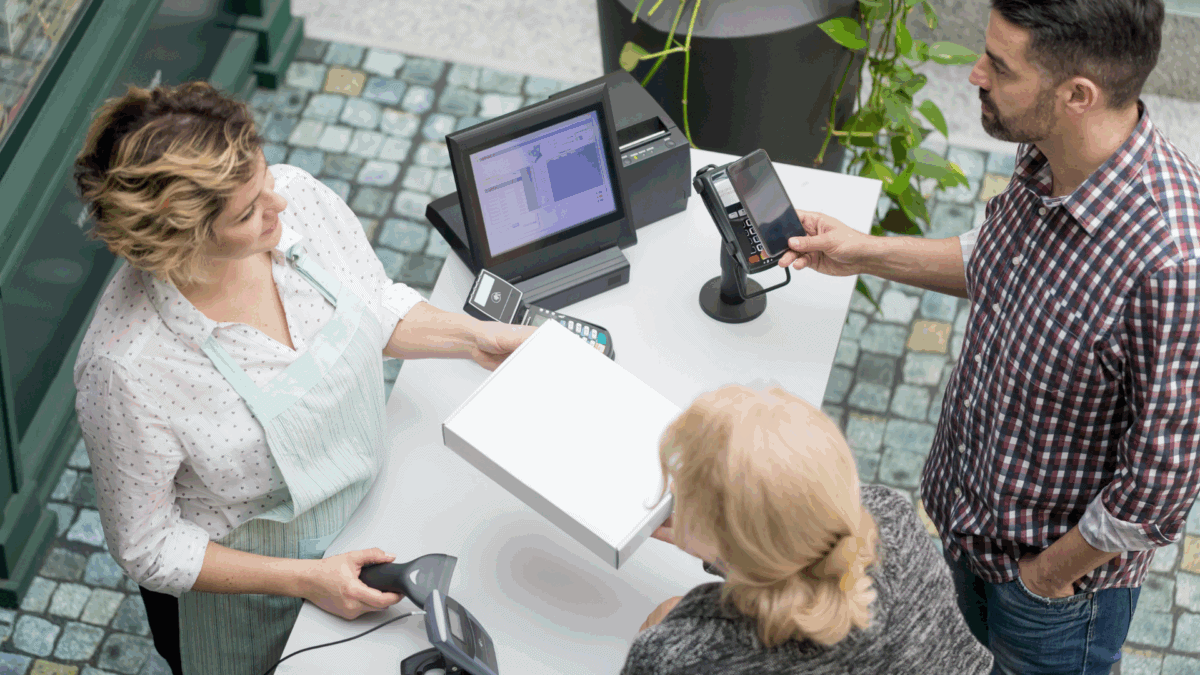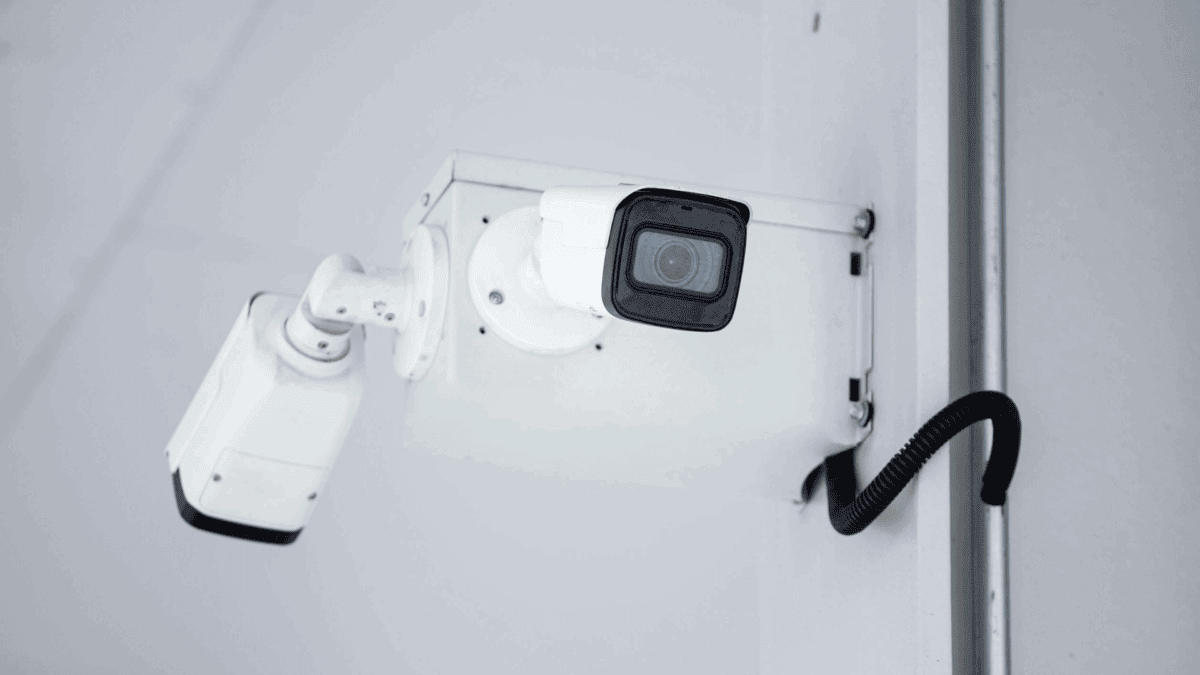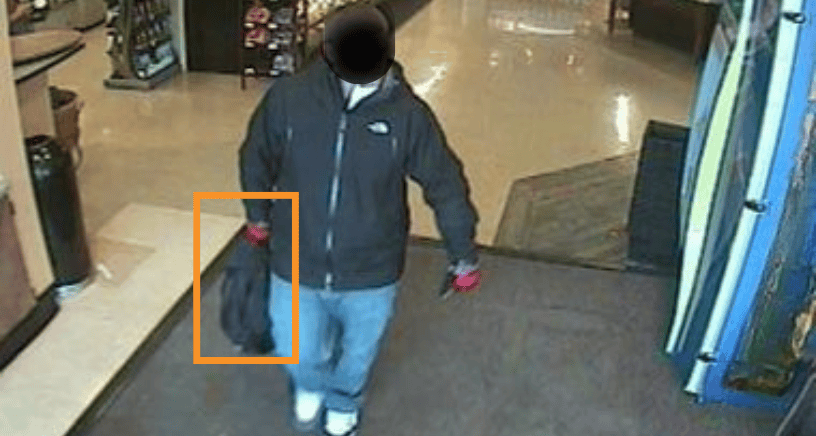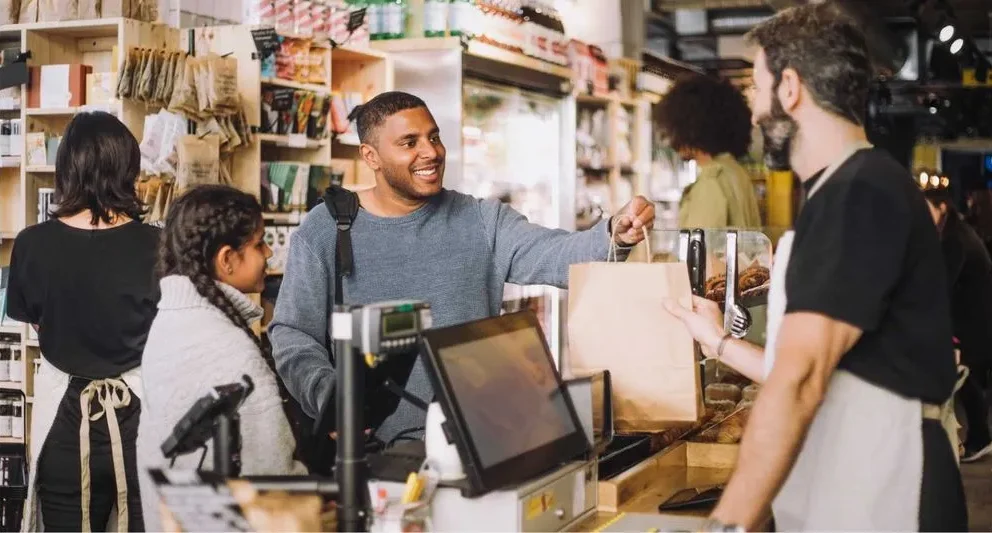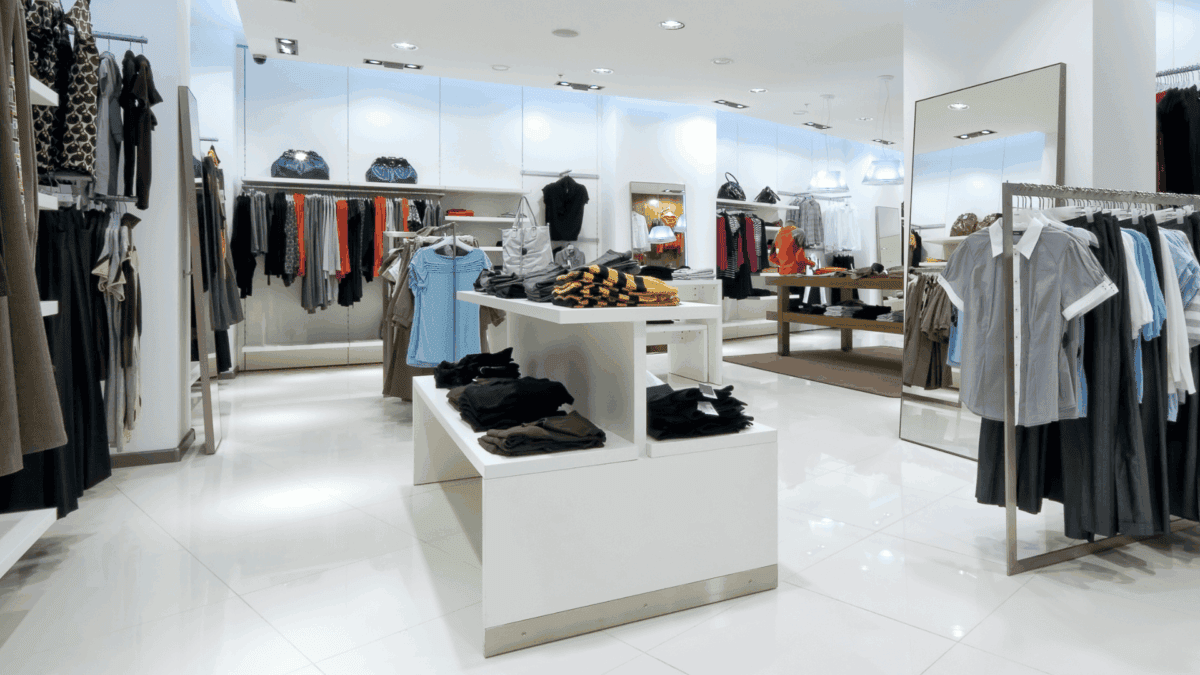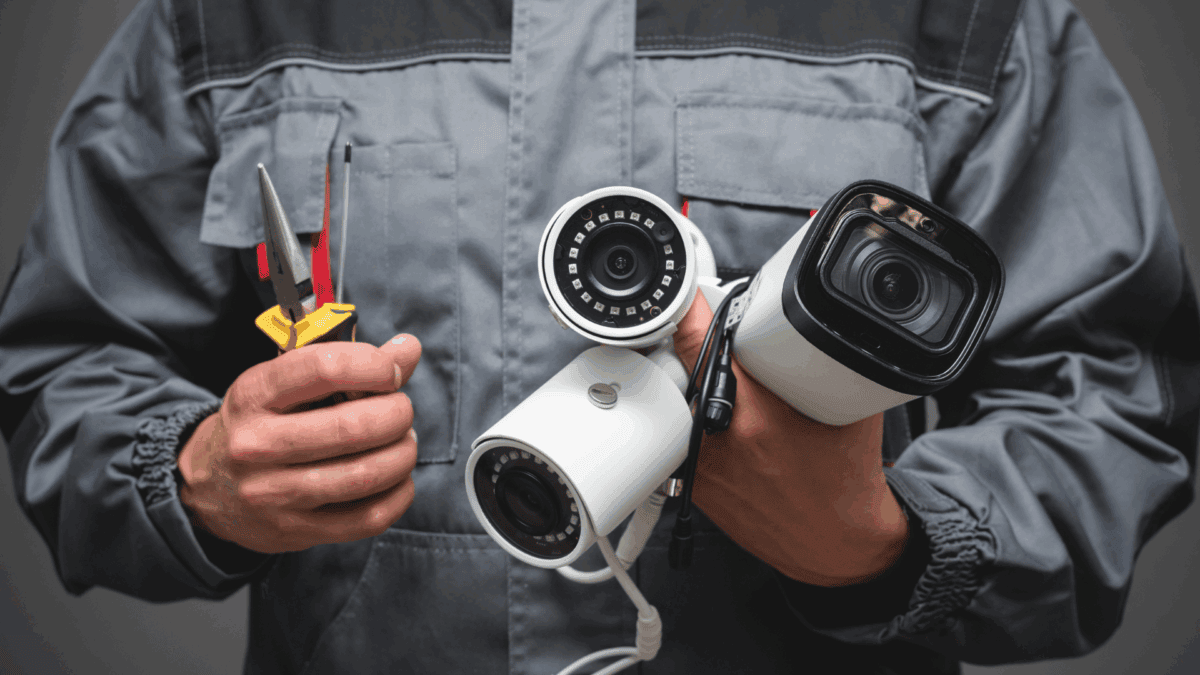The Simplest Ways to Maximize the Use of Security Cameras in Stores
In This article
Security cameras are a welcome addition to any modern retail or commercial establishment. They enable millions of businesses, including many small businesses, to operate profitably despite losses from shoplifting and other property crimes. Serving as the eyes on the store environment, security cameras in a store are a management and employees’ partner in spotting shoplifters. As security camera technology advances, retailers who want high-quality security cameras are best served by visiting a local security camera store.
Security cameras are crucial to a retail store’s operations, making it essential to work with a local security camera store. With their in-depth knowledge and experience, these experts can conduct an on-site store review and create a custom plan with the exact number and types of security cameras a particular retailer needs. Today’s security cameras offer higher resolution and enhanced motion-detection capabilities, and are often integrated with artificial intelligence (AI). A security camera expert will also assess the area in which a store is located. They may consider a store’s adjacency to other stores, exterior foot-traffic patterns, and any local demographic factors.
Doing business with a local security camera store has the added benefit of supporting local businesses. Making those business-to-business connections strengthens a community and its business and commercial sectors. Establishing a working relationship with a security camera store means retailers can easily replace old cameras with newer technology and have a consultant who will help adjust a retailer’s Security Camera Store Near Me plan as conditions change.
Historical Development of Security Cameras in Stores
Many may be surprised to learn that the first use of surveillance or security cameras occurred during World War II. By the 1960s, they were installed in public spaces in large cities for crowd control and observing those spaces for criminal activity. By today’s standards, these security cameras are very basic. Their analog technology produced only a low-resolution, black-and-white image, especially in low-light conditions.
In the 1970s, retail stores and banks began using security cameras and connecting them to video cassette recorders (VCRs), enabling playback and post-incident review.
1980s: The first color security cameras.
1990s: Cameras became smaller with higher resolution and connected to digital video recorders (DVRs).
2000s: Cameras are networked via the Internet to enable remote access to video data from anywhere. IP (Internet Protocol) security cameras offer better resolution quality and enhanced security system integration.
2010s: Image quality improves again with the introduction of high-definition and 4K cameras. Integration with AI expands the value of security cameras in stores. Facial recognition, motion detection, and behavioral analysis are essential for enabling real-time responses to security incidents.
Shoplifters will still come, but the evolution of security cameras from the 1940s to today’s advanced technology is helping retailers detect more shoplifting activities, monitor their employees, and, most importantly, ensure maximum customer safety. This sense of responsibility in ensuring a safe shopping environment is crucial for retailers to operate their businesses with greater confidence.
Best Practices for Installing Security Cameras in Stores
To fully benefit from the advanced technologies of security cameras in stores, retailers need a comprehensive placement plan created in collaboration with experts at a local security camera store. With a store assessment, they can recommend the best locations for maximum coverage, including any blind spots. That starts with the entrance, exit, and checkout counters, but all aisles should be visible, especially where luxury or high-priced merchandise is displayed. Even if a retailer decides to display merchandise in locked glass cases, the security cameras in the store must also have a view of them.
A retailer should inform the security camera expert if they periodically move and reconfigure merchandise and displays. These changes may prompt the expert to recommend adding more cameras or to revisit the store to assess the new layout and suggest adjustments. When deciding where to install security cameras, the retailer must also consider lighting. The expert can evaluate the space, identify dim areas, and recommend installing additional lighting to help cameras capture and record high-quality images. Managers and employees must confirm what they observe before they approach a potential shoplifter.
Monitoring employees’ work activities also requires careful placement of security cameras in a store. These include, but are not limited to, those handling transactions, cash transactions, and backroom inventory staff, especially if most of the store’s merchandise consists of small items. Retailers can explain these activities and their locations to a security consultant, or they can observe them to determine where to install security cameras.
Maximizing Security Camera Features
Today’s retailers benefit from significant advancements in security camera technology, including facial recognition, motion detection, and numerous AI-powered capabilities. As more retailers install security cameras with these advanced features, they discover that software is becoming equally, if not more, important in a network security system than hardware. The advanced features of security cameras and a store’s security devices generate large amounts of data. Retailers are focused on the value that data management software creates to enhance security, as opposed to the value of security camera hardware, which is still crucial in a storewide security system.
Motion Detection Options
Security cameras with motion detection tilt the security playing field in favor of retailers. They offer several options for motion-detection technology.
- Passive infrared (PIR) sensors sense the heat radiating from people or animals.
- Microwave’s electromagnetic radiation identifies objects’ size and shape and activates an alert when they change.
- Pixel-based methods can identify subtle changes from one video frame to another at the pixel level.
- Gesture recognition analyzes human movements, even hands and fingers, to reveal typical shoplifting behaviors and when employees handle transactions.
Remote monitoring represents a significant step forward in maximizing the security camera features in a store. In-store managers and employees can access real-time camera views via a mobile device anywhere in the store. They don’t need to be glued to a monitor at the counter or in the backroom. Ownership and management also have remote access, and a mobile alert app can notify them of off-hours incidents.
Retailers’ store security systems are even more valuable when networked with AI security cameras. AI’s precision and accuracy enable real-time video analysis, allowing for the distinction of viewed objects, thereby reducing the need for management and employees to respond to false alarms. Facial recognition, intrusion detection, and audio detection are just a few of the other capabilities of AI security cameras.
Integrating Security Cameras with Store Operations
Spotting and stopping shoplifters is a primary value of security cameras in stores, but they add more value when fully integrated with store operations. Preventing losses is also dependent on carefully monitoring inventory and employee productivity and managing customer flow throughout the store.
Employee theft is a significant challenge for retailers. A 2024 National Retail Federation survey found employee theft contributed approximately 30% to total retail shrinkage. More alarming is that businesses have recovered only 11% of those losses. Employee productivity also impacts the bottom line. When management uses security cameras to monitor staff work activities, they can identify which employees need additional training and guidance. They can also analyze how to improve the store layout and operations to boost productivity. Additionally, management can reference security camera data when preparing and conducting regular employee reviews.
Another benefit of installing security cameras in stores is that retailers can collect data on customer movement. They can spot shoplifters and analyze footage to design a store layout that optimizes merchandise and display placement. This strategy helps customers easily access special offers and high-end merchandise with the highest margins.
Retailers can also connect one or more security cameras to their point-of-sale (POS) terminals and system to detect employee theft during transactions or identify questionable customer behavior at the checkout counter. Although this integration often comes as an add-on feature, the valuable data it generates makes it a worthwhile investment. Retailers can view transactions in real time when they overlay them on the camera feed. They can also search the store’s video database using multiple transaction parameters, such as the amount, item, or employee involved in the sale.
Challenges and Solutions in Using Security Cameras
Security cameras play a crucial role in keeping retail operations profitable, but they also come with some challenges. Experts estimate that security cameras last about 10 years. To ensure they operate efficiently and last as long as possible, retailers should schedule regular inspections and maintenance with a local security camera store. These checkups help determine when to replace or upgrade cameras.
Retailers also face privacy concerns, which camera store experts or legal counsel can help address. Retailers must balance the need to protect customer and employee privacy with the responsibility to detect and prevent shoplifting and internal theft. Security cameras, along with proper maintenance, inspection, and timely replacement, offer a solid solution. When cameras capture sharp, clear footage, retailers reduce the risk of violating privacy rights while still safeguarding their stores.
False alarms can also impinge on customers’ and employees’ privacy rights. Weather, defective or confused motion detectors, and power outages are just a few causes of false alarms. They can disrupt the shopping environment and even cause panic among customers and employees. Management doesn’t want to spend valuable time responding to false alarms. If they occur too frequently, employees can develop a “cry-wolf” attitude, relax their vigilance, and question their validity.
Utilizing cloud-based technologies and providing additional staff training are solutions to these and many other challenges associated with using security cameras in stores.
Current Trends in Store Security Cameras
The rapid acceleration of retail security systems and devices, including security cameras, is a recent trend. As threats and incidents continue to increase, stores and all commercial establishments require the latest technologies, rapid deployment, and ongoing upgrades.
Security integrators or security camera store experts can help retailers benefit from another trend: installing homogeneous systems with robust software to expand automation, facilitate real-time data analysis, and introduce AI-powered capabilities.
Artificial intelligence is already a primary trend in stores’ security systems and cameras, and will only become more integral to the entire retail security paradigm. AI’s application to retail security is less likely to replace human interaction, which is crucial for maintaining good customer relationships. It will enable the automation of more security processes, allowing employees to focus on high-value activities and easily access security camera data and analysis.
A welcome trend in security camera technology is the increased value of the work they can perform beyond simply detecting shoplifting and employee theft. Connecting security cameras in stores to sophisticated systems can help retailers with parking management, vehicle recognition, delivery detection, quicker detection of smoke and fire, and accurate recording of customer or employee accidents and injuries, among other benefits.
Conclusion
The evidence is undeniable: retailers need security cameras in stores to operate safely, effectively, and efficiently, thereby boosting and protecting their bottom line. The challenges of shoplifting, employee theft, and other security issues persist, so partnering with a local security camera store and its experts is the first step toward improving security. They will conduct a comprehensive security assessment, design a customized security camera system and a storewide security network, and provide regular consultations on lighting, maintenance, replacement, and addressing new security issues. Their guidance will also ensure that security cameras are installed in the best location, allowing managers and employees to use them effectively.
Advanced security camera technologies enable seamless integration with a comprehensive cloud storage network, provide remote access, and offer numerous benefits of AI-powered cameras and other devices.
Employee training (and retraining) is crucial to maximizing the value of store security cameras. All retail security technologies are constantly evolving, adding new features and capabilities that employees must thoroughly understand so they can contribute maximum effort to security needs. The experts at a local security camera store can provide valuable training advice and serve as the best source for the latest security camera trends.
Learn more about how DTiQ’s intelligent video capabilities can increase in-store security and reduce loss.
Frequently Asked Questions About Security Cameras in Stores
Q: Why can’t I design and install security cameras in my store?
A: Because of the many types of security cameras, their advanced features, and the need to integrate them with inventory management, POS, and other operational systems, working with a local security camera store will save you time and ensure the cameras and all other equipment fulfill your exact security needs.
Q: What is the best placement for security cameras in stores?
A: Although the average retail store may have security camera needs similar to those of neighboring stores, the best camera placements may differ from store to store. An eye level or height of three meters (approximately nine feet) is widely recommended. Cameras should be visible to deter shoplifters and demonstrate to customers that security cameras add to their protection. Security camera placements should also account for blind spots and areas with low light.
Q: How often should I replace the security cameras in my store?
A: Generally, security cameras have a 10-year lifespan. Regular maintenance and checking will help them realize that entire lifespan. This is another reason why partnering with a local security camera store is so beneficial. The added value of new security camera technology may be so compelling that a retailer finds it prudent to replace old cameras sooner.
Q: What is the most important trend in security cameras in stores?
A: There are many beneficial trends for retailers on the front lines of shoplifting, employee theft, and inventory management, but AI-powered security cameras will drive innovation for many years. From more precise identification of faces, objects, and behavioral patterns to a range of detection capabilities, including real-time data gathering and analysis, integrating AI with security cameras and all retail security systems will provide retailers with greater peace of mind.
